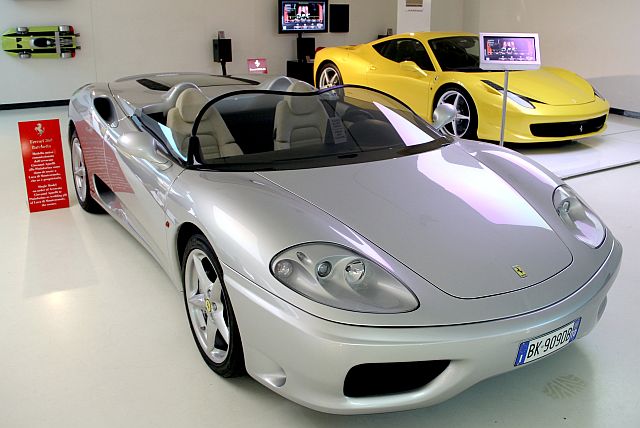
One of a Kind Ferrari 360
IT MUST give full disclosure at the start of this article—I am not what you would consider a car guy. I cannot recite the size engine of particular cars. I can’t even change the oil in my own car. But I do have an appreciation for cars, especially high-end sports cars. I like them; I just don’t memorize and recite every detail.
When traveling through Italy I was invited to take a side trip to town of Maranello. Outside of the world of cars, most people have probably never heard its name. This small of town of 17,000 is located in north central Italy, less than 20km from Modena, the home of the best, high-end balsamic vinegar. The area around Modena is like a Mecca for Italian sports car and motocycle enthusiasts. Nearby are the factories of Lambourghini, Maserati, Ducati, and specifically in Maranello is Ferrari.
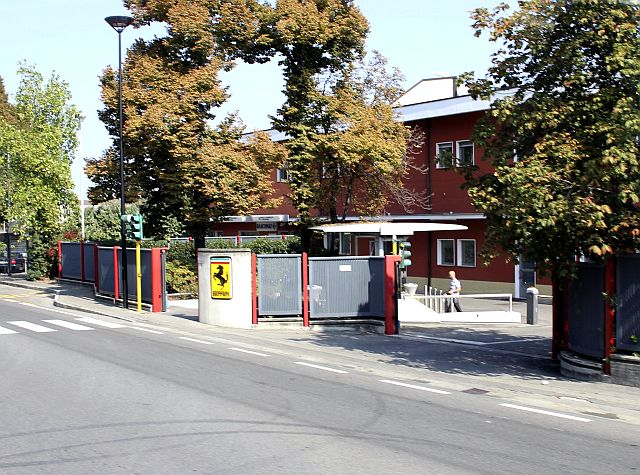
Factory entrance
How did Ferrari come to be located in a small town in Northern Italy? It goes back to the 1940s when founder Enzo Ferrari decided to build a factory to build cars following the end of World War II and the fascist Italian government of Mussolini. In 1947 he made the first car bearing his family name.
Enzo Ferrari had already founded his Grand Prix racing team called Scuderia Ferrari just before 1930 and it became the official racing team of another famous Italian car brand, Alfa Romeo. During the war, manufacturers were required to build equipment to support the military so consumer car production halted. At the conclusion of the war, Ferrari started to build his own brand of car using his name; they, too, became a fixture on the Grand Prix circuit gaining worldwide fame to this day.
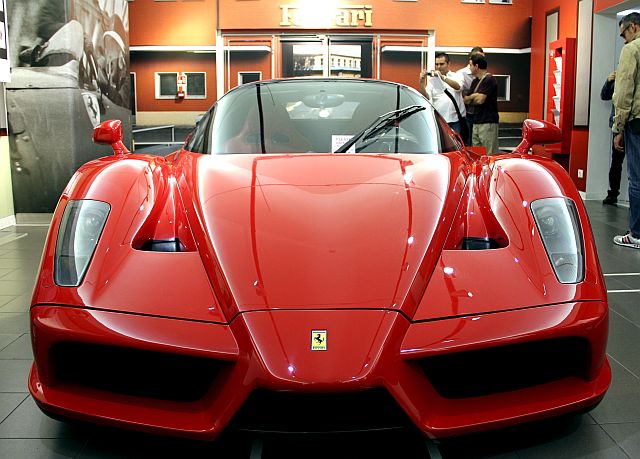
Enzo Ferrari
On my trip to Maranello, we traveled through the Italian countryside through such famous food cities as Modena (balsamic vinegar) and Bologna (the lunch meat of the same name) and nearby was Parma (ham). We eventually exited the highway through smaller towns. The first familiar Ferrari site we came to was the test track. The track was built in the early 1970s and has served as the testing grounds for every Ferrari-built car since. Tweaks, fine tuning, and spectacular engineering has all taken place on the track for both street legal and racecars. As our tour bus passed by we could see a Ferrari driver whirl by on the track.
As we came into the town, we passed by the Ferrari factory. The highly guarded factory is off limits to the public except for certain high-end customers by invitation only. They do offer a 20-minute bus tour, but visitors are not allowed off the bus or to take photos and the route does not go into view of any production facilities. I guess for a company with over US$4 billion in assets, every advantage over the competition is top secret.
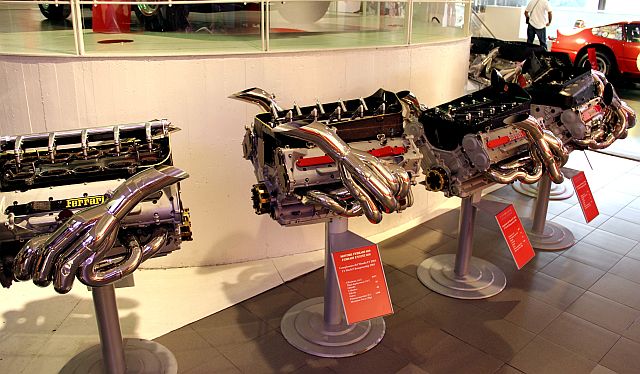
Evolution of engine
Instead we went to the Museo Ferrari, the official museum operated by the Ferrari company. The facility total 2,500 square meters where many of their iconic cars are on display. For an entry fee of 15 Euro (approximately P800), visitors can get up close and personal with the famous Maranello export.
We saw the history of the car brand and racing team from the adoption of the famous prancing horse (homage to famous Italian WW I pilot Count Francesco Baracca who was killed in action and had a similar design on his planes) to racing gear of legend Michael Schumacher to one-of-a-kind cars given as gifts to the Ferrari family.
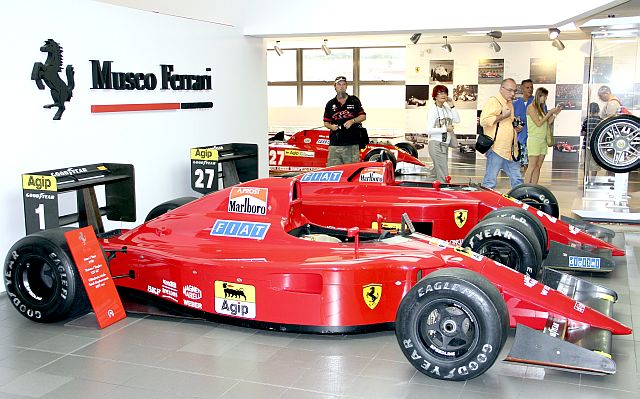
Ferrari Racing
The technology of car building and racing was one of the most intriguing parts of the museum for me. While I may not understand the entire complex
engineering concepts behind the legendary racecars, it was obvious to even the non-engineers to see how far the racing industry has come in the past 70 years. We could see the progression out of the love of racing and building cars into the big business, multibillion-dollar industry it has now become.
There is a large room devoted to the Formula One team and the championship racecars and trophies. There is another area for the design improvements and engineering feats complete with scale models used to test design theories. Then another large area is dedicated to the legendary road cars.
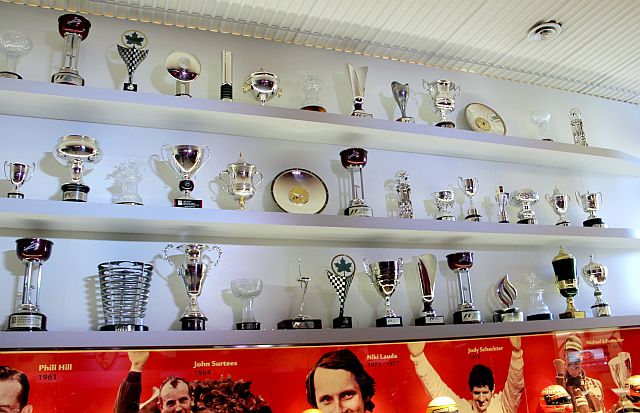
Trophy Room
The road cars was one of the most interesting areas for me. Ferrari has produced some iconic cars on both television and film such
as “Miami Vice,” “Magnum P.I.,” “Ferris Bueller’s Day Off” and “The Rock” just to name a few. Inside the museum, featured was the US$1 million Enzo Ferrari and a one-of-a-kind Ferrari 360 that was given as a wedding gift from the Luca di Montezemolo, the former Chairmen of Ferrari. As expected of a museum, all cars on display were in pristine condition. Even if built nearly 70 years ago they look like they just came from the factory.
Outside of the museum there were companies that sell the “Ferrari experience,” where you can pay money, quite a large amount, to drive a real Ferrari for about 15 minutes in a controlled area. For me, my experience inside the museum was complete enough, plus my wallet was much happier without driving a car.
Instead, I got back on our tour bus, drifting off to sleep and dreaming of racing across the test track in my own Ferrari.
